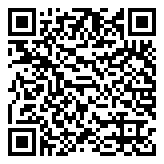Introduction
Marine Cable Laying Training is an essential program for professionals involved in planning and executing subsea cable installation projects for applications including telecommunications, power transmission, and offshore infrastructure. This specialized training provides participants with the technical knowledge and practical insights required to manage and execute marine cable laying operations in line with international standards, particularly IMCA safety and operational procedures.
Designed for engineers, offshore project managers, marine surveyors, and technical staff across various marine and offshore sectors, this course ensures participants gain a deep understanding of cable laying vessels and equipment, route planning techniques, and operational safety practices.
Course Objectives
By the end of this Marine Cable Laying Training program, participants will be able to:
- Understand the principles, lifecycle, and planning stages of marine cable laying.
- Identify the various types of subsea cables (power, telecom, and fiber optic) and their respective applications.
- Analyze marine survey data to plan cable routes effectively.
- Operate and supervise cable-laying vessels and equipment during projects.
- Implement IMCA safety and operational procedures throughout the installation process.
Course Outlines
Day 1: Fundamentals of Marine Cable Laying
- Overview of subsea cable types and applications (power, telecom, fiber optic).
- Introduction to cable laying vessels and equipment.
- Cable laying project lifecycle and planning stages.
- Key roles and responsibilities in a cable laying operation.
- Introduction to IMCA safety and operational procedures and industry standards.
Day 2: Route Planning and Marine Survey
- Types of marine surveys (geophysical, geotechnical).
- Criteria for route selection and hazard identification.
- Engineering cable routes and seabed preparation.
- Using GIS and software tools in route planning.
- Interpreting bathymetric and geophysical data to support effective installation.
Day 3: Cable Handling and Installation Equipment
- Overview of cable drums, tensioners, ploughs, and trenchers.
- Best practices for onboard cable storage and deployment systems.
- Cable burial techniques: surface lay, ploughing, trenching.
- Real-time monitoring and ROV (Remotely Operated Vehicle) support during installation.
- Equipment maintenance and operational readiness checks.
Day 4: Installation Procedures and Safety Protocols
- Pre-lay grapnel run (PLGR) and touchdown monitoring.
- Cable laying techniques and controlling deployment speed.
- Emergency response strategies and contingency planning.
- Applying IMCA safety and operational procedures and conducting risk assessments.
- Case studies on cable laying failures and lessons learned.
Day 5: Testing, Commissioning, and Post-Lay Activities
- Cable testing procedures (OTDR, insulation resistance, etc.).
- Techniques for shore-end landings and cable protection.
- As-built documentation and post-lay inspection using ROV surveys.
- Reporting requirements and IMCA documentation standards.
- Final assessment and interactive discussion to reinforce learning outcomes.
Why Attend this Course: Wins & Losses!
- Gain a comprehensive understanding of Marine Cable Laying Training and the entire project lifecycle.
- Acquire practical knowledge to operate and supervise cable laying vessels and equipment safely and effectively.
- Develop skills to interpret marine survey data and plan cable routes with precision.
- Master IMCA safety and operational procedures to ensure international compliance.
- Learn emergency response techniques and risk mitigation for subsea cable installation.
- Access real-world case studies to enhance decision-making in complex marine environments.
- Enhance your technical and project management skills for offshore cable laying.
- Obtain a professional certification that supports your career development and credibility in the field.
Conclusion
This Marine Cable Laying Training course delivers a structured and comprehensive framework for professionals aiming to master the planning and execution of subsea cable installation projects. By focusing on cable laying vessels and equipment, marine survey interpretation, and adherence to IMCA safety and operational procedures, the course addresses the unique challenges of offshore cable projects.
Participants will leave with enhanced technical skills and the confidence to apply international best practices, ensuring safer and more efficient marine cable installations that support global telecommunications, energy infrastructure, and more.


